The Excretory System:
Structure
Structure
The Urinary Tract:This is the path that urine follows out of the body. It starts in the kidneys where water and dissolved wastes from the body are filtered into urine. It then collects in the collecting ducts, which then all feed into a renal pelvis (storage like space). From there the urine travels down a ureter into the urinary bladder. The urine then travels out of the body via the urethra.
There are two kidneys, one on each side of the body. Both carry out the exact same processes. Read more about the kidneys below!
Because there are two kidneys, there are also two ureters. Ureters are about 16-18 inch long, narrow tubes with a thick muscular wall that connect the renal pelvis to the bladder.
There are two kidneys, one on each side of the body. Both carry out the exact same processes. Read more about the kidneys below!
Because there are two kidneys, there are also two ureters. Ureters are about 16-18 inch long, narrow tubes with a thick muscular wall that connect the renal pelvis to the bladder.
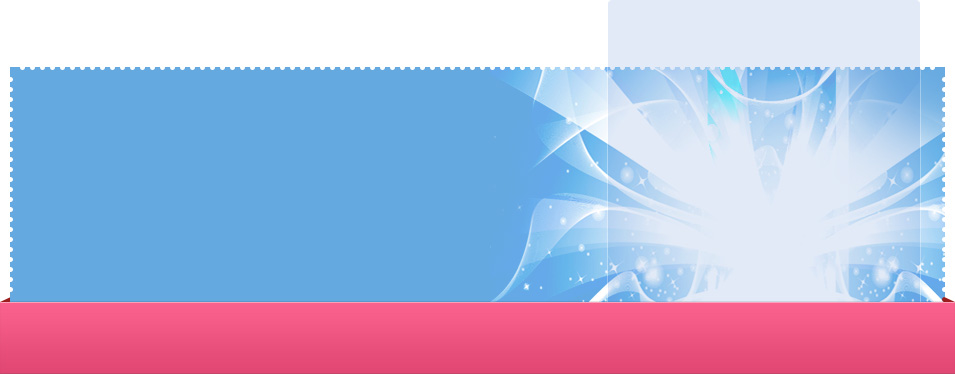
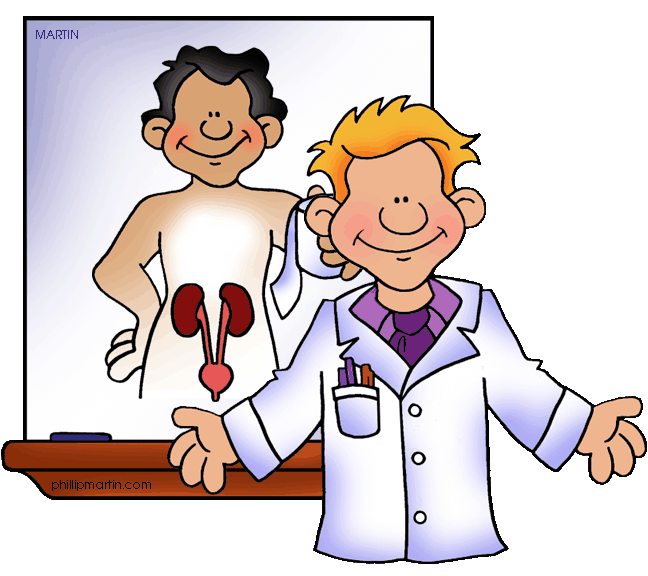
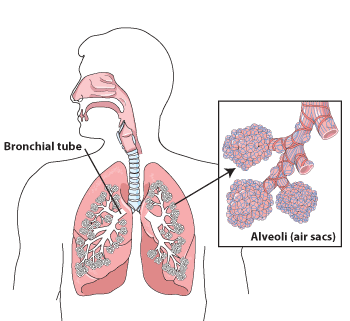
The Lungs: The lungs are two sponge like organs that secrete Carbon Dioxide and heat, and supply the body with a regular supply of oxygen. They are composed of millions of tiny air sacs called alveoli, as shown in the diagram to the left. The alveoli are where the exchange of oxygen and carbon dioxide happens. When you inhale, air fills most of your alveoli. Through diffusion, oxygen moves to the capillaries and is picked up by your blood and brought to cells. The oxygen is then used up, and carbon dioxide diffuses out of the cells into the blood and returns to the lungs via the veins. There it diffuses through the capillaries back into the alveoli and into the lungs where it is then exhaled.
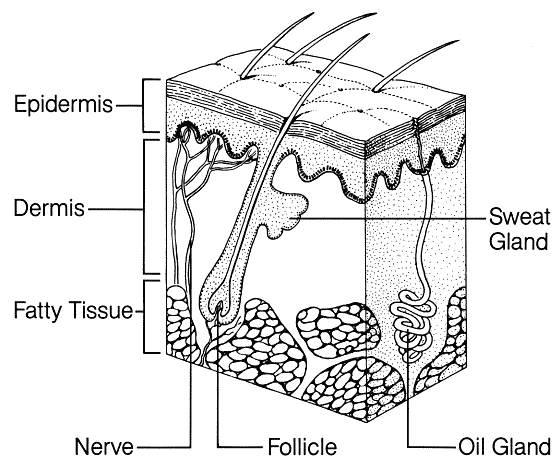
The Skin: The skin is a waterproof protecting organ that covers the body. It is composed of two layers: the epidermis and the dermis. The epidermis is the outer protective layer. The dermis is the inner layer that contains blood vessels, sensory nerve endings, fat and hair cells, and SWEAT GLANDS! In the excretory system, the skin's job is getting rid of salt and water via perspiration (AKA sweating). Sweat leaves the skin by way of the pores, and when it reaches the skin's surface it evaporates and takes some of the body's surface heat with it. Sweating is an example of one of the body's processes that help maintain a constant body temperature, and thus, homeostasis.
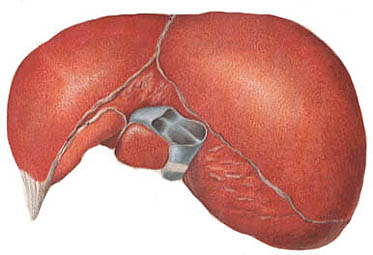
The Liver: The liver performs more functions than any other organ in the body. For the excretory system, the liver converts the highly toxic ammonia into the significantly less toxic urea. It also converts toxins such as drugs and alcohol into inactive products that can be excreted in urine, which helps maintain homeostasis. Sometimes, when alcohol breaks down in the liver, scar tissues replace the real tissue. This decreases blood flow through the liver and impairs its functions. As a result, toxins build up and there is a lot of bleeding and bruising. About 25,000 Americans die from alcohol related cirrhosis(scarring of the tissue) in the liver every year.
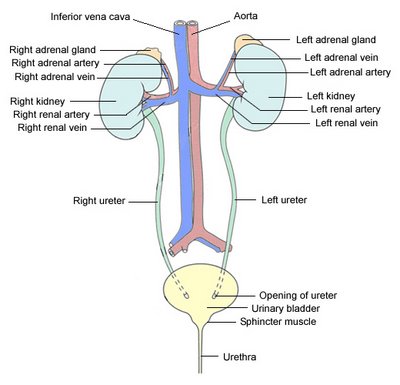
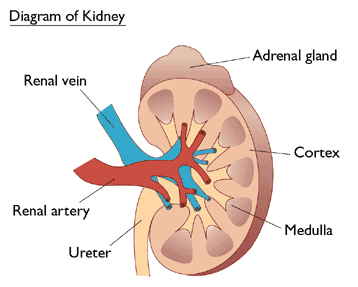
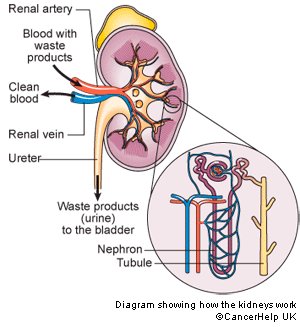
The Kidneys:As mentioned before, there are two kidneys. Humans only need one to function, but the other is there for backup. A kidney is about fist size and located next to the spine in your ribcage. Its primary concern is water conservation. The kidneys maintain a constant water vs. solute balance in body fluids. They are composed of an outer layer, called the cortex, and and inner core, called the medulla. An illustration of this can be seen in the diagram to the left. Nephrons are tubules that are the repeating units of the kidneys. In other words, the kidneys are made up of a whole bunch of tubes called nephrons. The tops of the nephrons are located in the cortex, and the long tube parts are in the medulla. Within a nephron, there is a whole system of tubes and capillaries on its own. However, it is very confusing and I think best left to Mrs. Loria to explain! But it is important to know that the nephrons and their parts, although small, are mighty! They do the hard work, and are vital to the successful completion of the kidney's functions. For example, when the glomerulus, a ball of tubes that are where the blood enters the nephrons, become inflammed, it can lead to kidney failure! Read more about this in Glomerulonephritis under the "Diseases" tab.
The bladder is a hollow muscular holding sac for urine. It can store about 1 pint of urine before it signals the urge to pee. When it is empty, the bladder is a collapsed shape. When it is full, it has a pear shape.
The urethra is the final stretch of the urinary tract; the small muscular tube that transports urine from the bladder to outside the body. It is about 8 inches in males, and less than 2 inches in women. When a sphincter at the bottom of the bladder relaxes, urine flows out into the urethra then outside the body.
The urethra is the final stretch of the urinary tract; the small muscular tube that transports urine from the bladder to outside the body. It is about 8 inches in males, and less than 2 inches in women. When a sphincter at the bottom of the bladder relaxes, urine flows out into the urethra then outside the body.